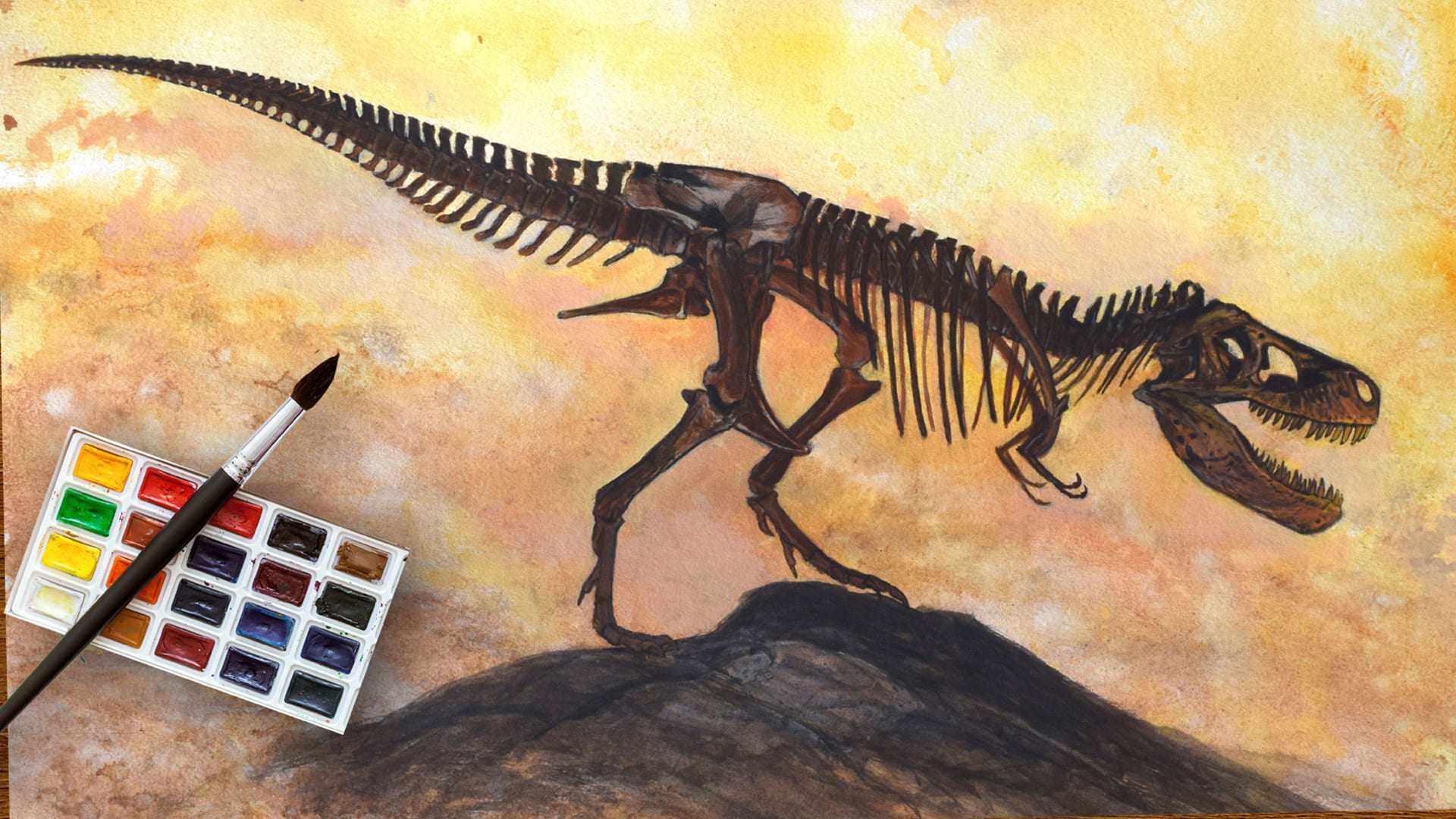
How do we know what dinosaurs looked like?
Scroll for prep

Please wait…
This video is having trouble loading. You may have lost your Internet connection.
Step 1: Click to Reload this page
Step 2: Click to
Try our other video player
Step 3: contact support if trouble persists.
Or,
dismiss this message.
DISCUSS:
How do you think scientists figure out what dinosaurs looked like?

Please wait…
This video is having trouble loading. You may have lost your Internet connection.
Step 1: Click to Reload this page
Step 2: Click to
Try our other video player
Step 3: contact support if trouble persists.
Or,
dismiss this message.
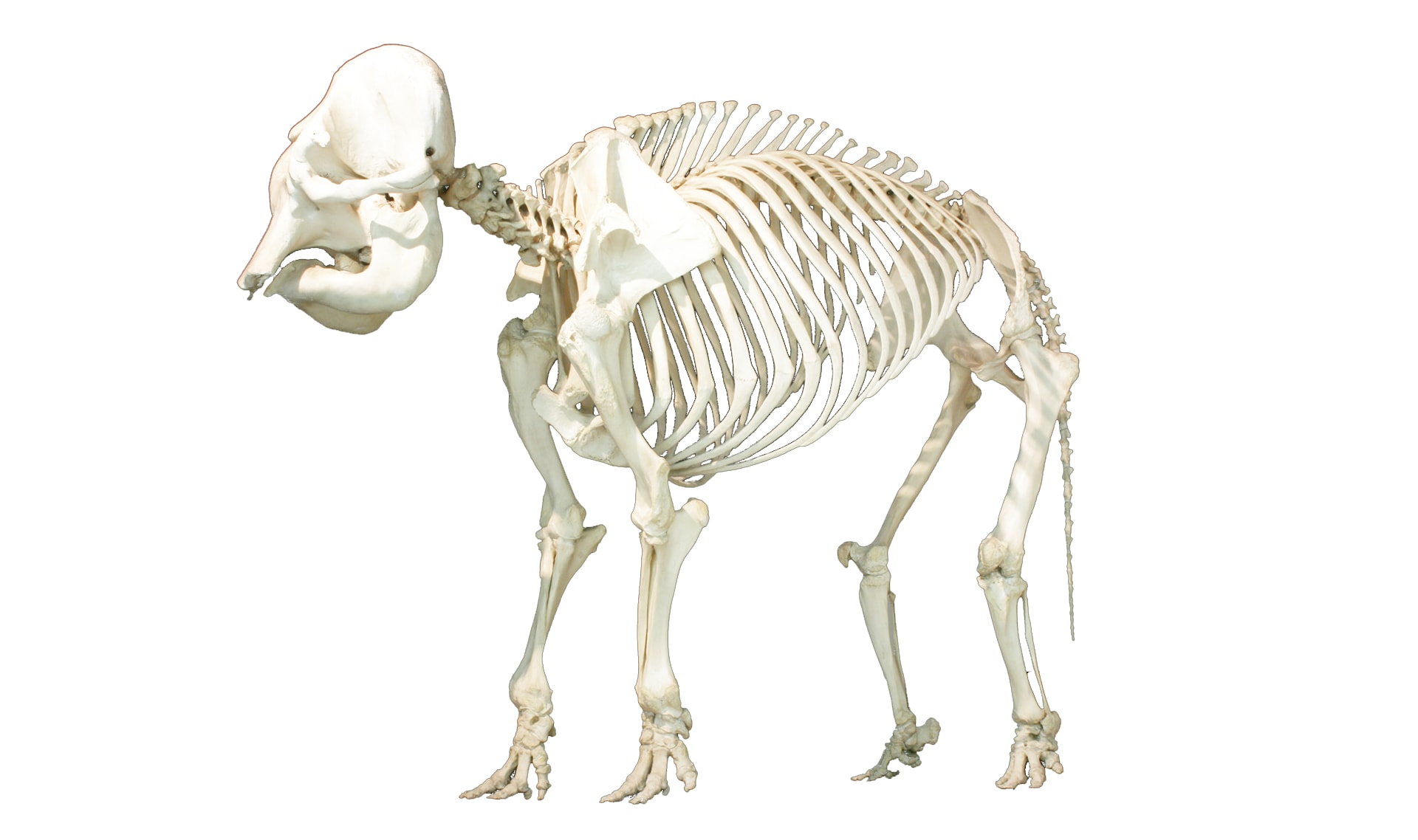
DISCUSS: (1 of 6)
This is the skeleton of a kind of animal alive on Earth today.
What kind of animal do you think it is?
This is the skeleton of a kind of animal alive on Earth today.
What kind of animal do you think it is?
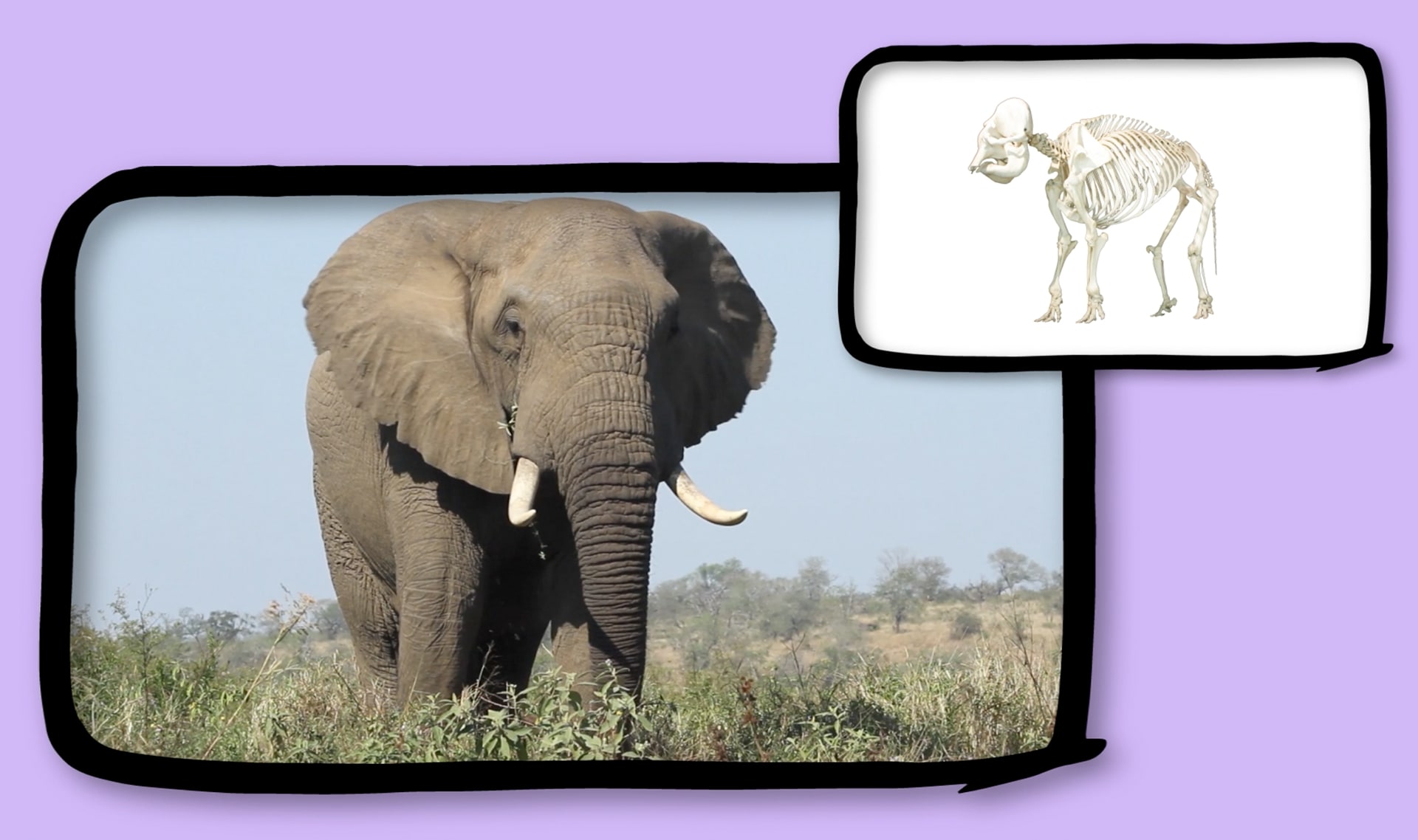
DISCUSS: (2 of 6)
It’s an ELEPHANT!
What would you need to add to make this look like a living elephant?
It’s an ELEPHANT!
What would you need to add to make this look like a living elephant?
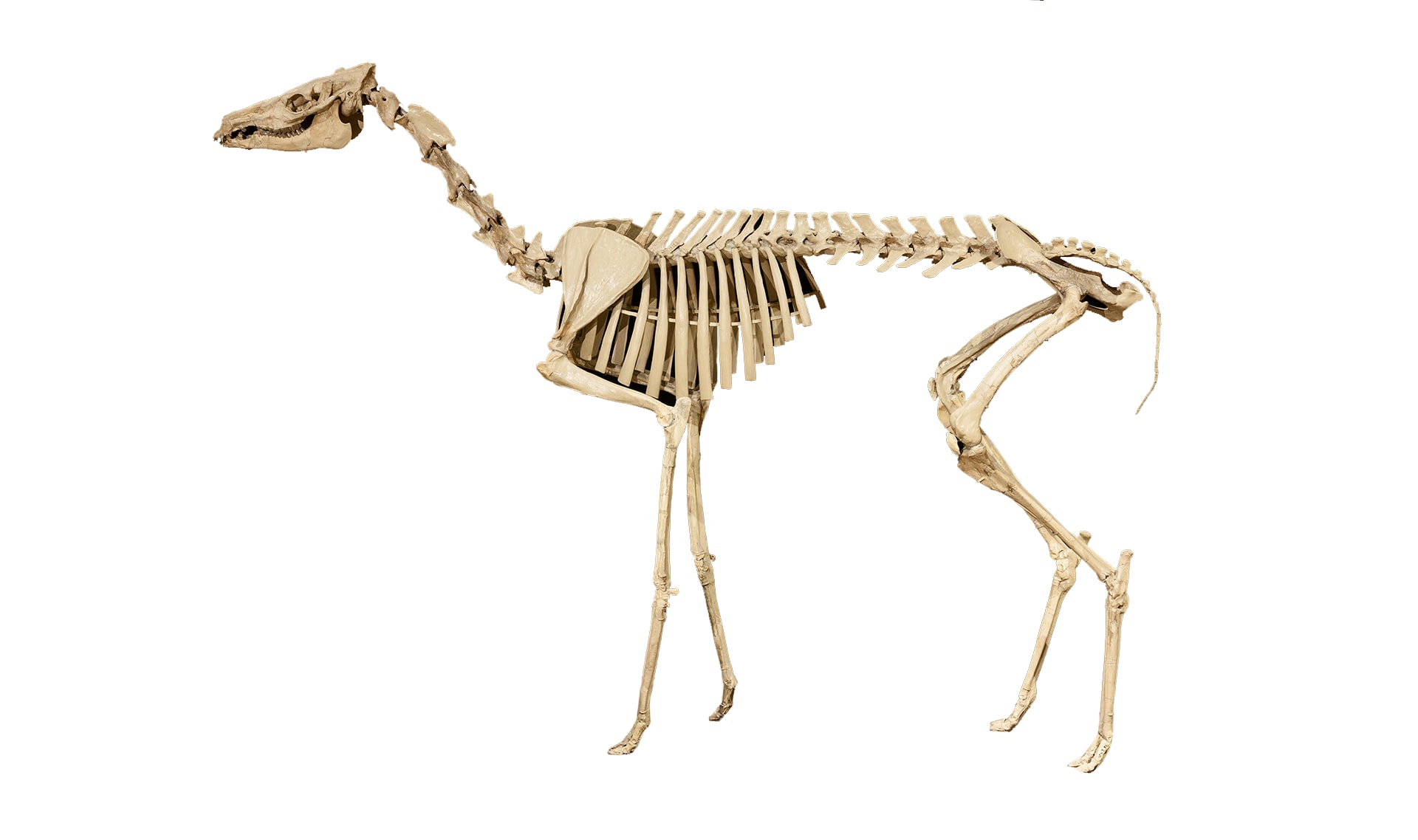
DISCUSS: (3 of 6)
Try another one! This is the skeleton of a kind of animal alive today.
What kind of animal do you think it is?
Try another one! This is the skeleton of a kind of animal alive today.
What kind of animal do you think it is?
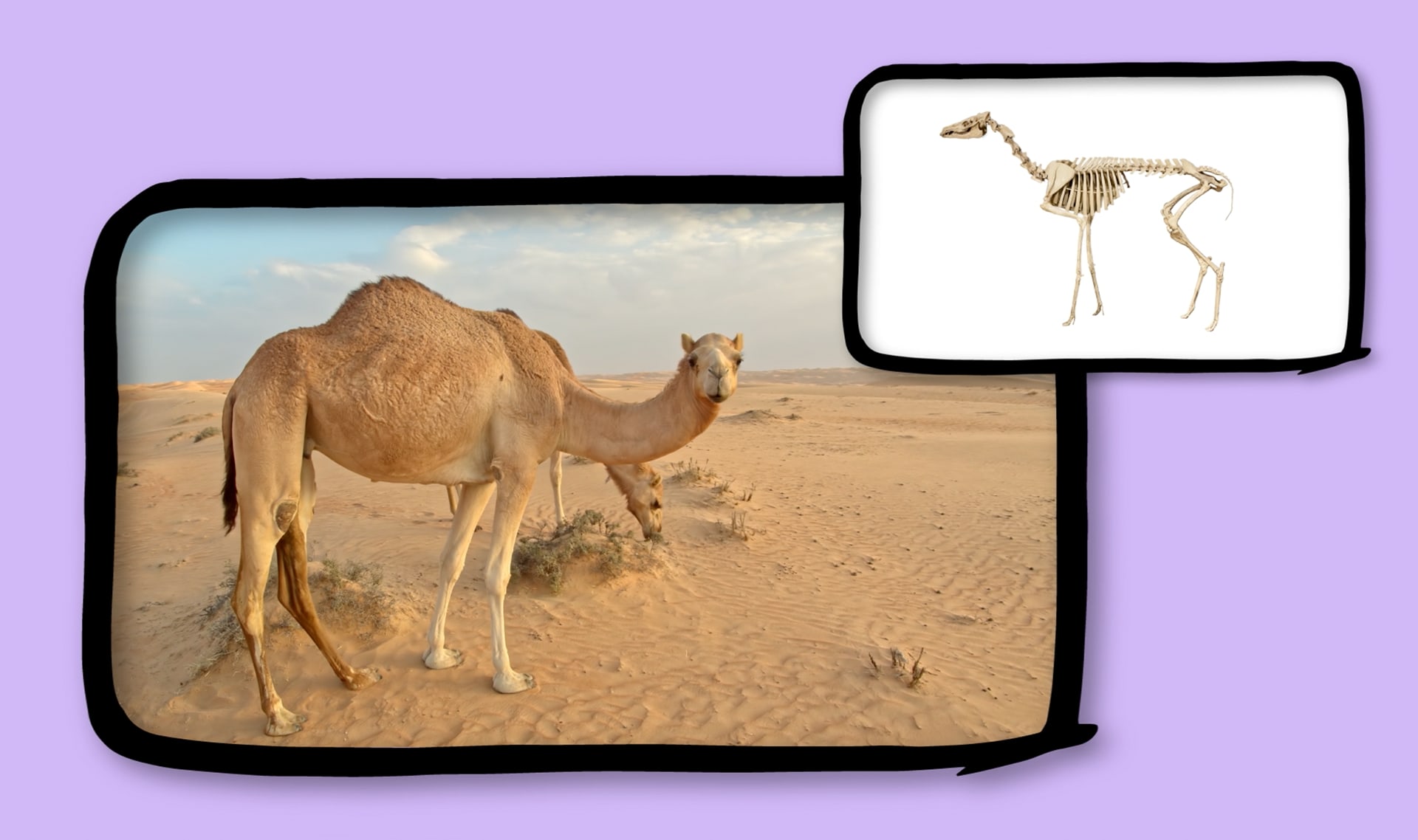
DISCUSS: (4 of 6)
It’s a CAMEL!
What would you need to add to make this look like a living camel?
It’s a CAMEL!
What would you need to add to make this look like a living camel?
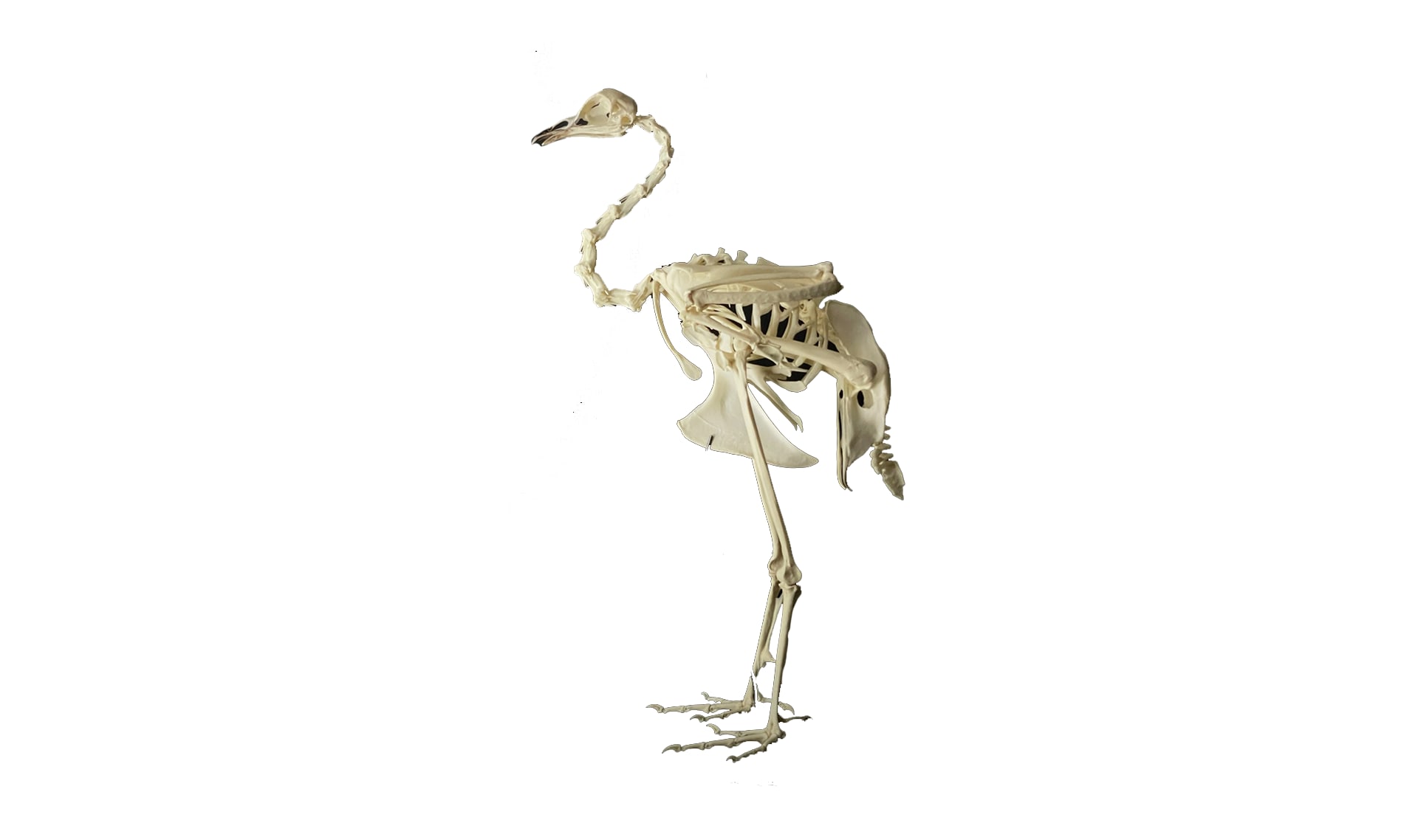
DISCUSS: (5 of 6)
Last one! This is the skeleton of a kind of animal alive today.
What kind of animal do you think it is?
Last one! This is the skeleton of a kind of animal alive today.
What kind of animal do you think it is?
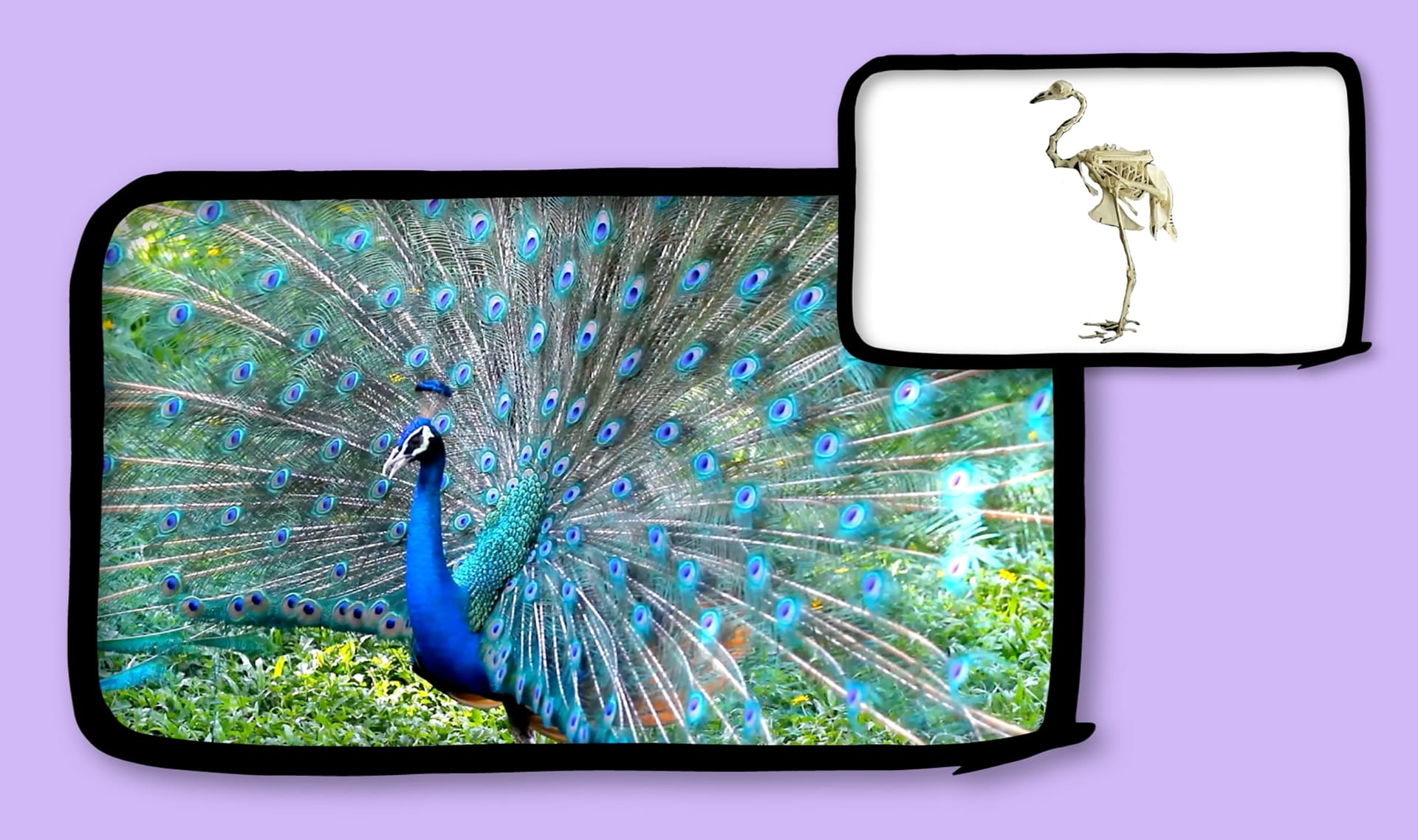
DISCUSS: (6 of 6)
It’s a PEACOCK!
What would you need to add to make this look like a living peacock?
It’s a PEACOCK!
What would you need to add to make this look like a living peacock?

Please wait…
This video is having trouble loading. You may have lost your Internet connection.
Step 1: Click to Reload this page
Step 2: Click to
Try our other video player
Step 3: contact support if trouble persists.
Or,
dismiss this message.

DISCUSS:
What do the animals on top have in common?
What makes them look DIFFERENT from the animals on the bottom?
What do the animals on top have in common?
What makes them look DIFFERENT from the animals on the bottom?

Please wait…
This video is having trouble loading. You may have lost your Internet connection.
Step 1: Click to Reload this page
Step 2: Click to
Try our other video player
Step 3: contact support if trouble persists.
Or,
dismiss this message.

DISCUSS:
Observe this dinosaur fossil closely. What do you notice?
Describe what you see in as much detail as possible.
Observe this dinosaur fossil closely. What do you notice?
Describe what you see in as much detail as possible.

Please wait…
This video is having trouble loading. You may have lost your Internet connection.
Step 1: Click to Reload this page
Step 2: Click to
Try our other video player
Step 3: contact support if trouble persists.
Or,
dismiss this message.

Please wait…
This video is having trouble loading. You may have lost your Internet connection.
Step 1: Click to Reload this page
Step 2: Click to
Try our other video player
Step 3: contact support if trouble persists.
Or,
dismiss this message.
Step
01/20
01/20
You’ll work with a partner.

Please wait…
This video is having trouble loading. You may have lost your Internet connection.
Step 1: Click to Reload this page
Step 2: Click to
Try our other video player
Step 3: contact support if trouble persists.
Or,
dismiss this message.
Step
02/20
02/20
Get your supplies.

Please wait…
This video is having trouble loading. You may have lost your Internet connection.
Step 1: Click to Reload this page
Step 2: Click to
Try our other video player
Step 3: contact support if trouble persists.
Or,
dismiss this message.
Step
03/20
03/20
Cut along the dotted lines of your Modern Animal Bone Cards.
Sort them into 3 piles: A, B, & C.
Sort them into 3 piles: A, B, & C.

Please wait…
This video is having trouble loading. You may have lost your Internet connection.
Step 1: Click to Reload this page
Step 2: Click to
Try our other video player
Step 3: contact support if trouble persists.
Or,
dismiss this message.
Step
04/20
04/20
Make observations about the skulls (“A” cards) with your partner.
Write and circle similarities and differences you notice on the cards.
Write and circle similarities and differences you notice on the cards.

Please wait…
This video is having trouble loading. You may have lost your Internet connection.
Step 1: Click to Reload this page
Step 2: Click to
Try our other video player
Step 3: contact support if trouble persists.
Or,
dismiss this message.
Step
05a/20
05a/20
Sort the skull cards into the two groups: carnivores and herbivores.
Answer question 1 on your worksheet.
Answer question 1 on your worksheet.

Please wait…
This video is having trouble loading. You may have lost your Internet connection.
Step 1: Click to Reload this page
Step 2: Click to
Try our other video player
Step 3: contact support if trouble persists.
Or,
dismiss this message.
Step
05b/20
05b/20
Here’s what we noticed.

Please wait…
This video is having trouble loading. You may have lost your Internet connection.
Step 1: Click to Reload this page
Step 2: Click to
Try our other video player
Step 3: contact support if trouble persists.
Or,
dismiss this message.
Step
06/20
06/20
Finalize which cards go in the carnivore group and which cards go in the herbivore group.

Please wait…
This video is having trouble loading. You may have lost your Internet connection.
Step 1: Click to Reload this page
Step 2: Click to
Try our other video player
Step 3: contact support if trouble persists.
Or,
dismiss this message.
Step
07a/20
07a/20
Did the dinosaur most likely eat meat or plants?
Answer questions 2 and 3 on your worksheet.
Answer questions 2 and 3 on your worksheet.

Please wait…
This video is having trouble loading. You may have lost your Internet connection.
Step 1: Click to Reload this page
Step 2: Click to
Try our other video player
Step 3: contact support if trouble persists.
Or,
dismiss this message.
Step
07b/20
07b/20
Here’s what we noticed.

Please wait…
This video is having trouble loading. You may have lost your Internet connection.
Step 1: Click to Reload this page
Step 2: Click to
Try our other video player
Step 3: contact support if trouble persists.
Or,
dismiss this message.
Step
08/20
08/20
New fossil discovery!

Please wait…
This video is having trouble loading. You may have lost your Internet connection.
Step 1: Click to Reload this page
Step 2: Click to
Try our other video player
Step 3: contact support if trouble persists.
Or,
dismiss this message.
Step
09/20
09/20
Make observations about these bones (“B” cards) with your partner.
Write and circle any similarities and differences on the cards.
Write and circle any similarities and differences on the cards.

Please wait…
This video is having trouble loading. You may have lost your Internet connection.
Step 1: Click to Reload this page
Step 2: Click to
Try our other video player
Step 3: contact support if trouble persists.
Or,
dismiss this message.
Step
10a/20
10a/20
Sort your “B” bone cards into two groups: animals that walk on their
back two limbs and animals that walk on all four limbs.
Answer question 4 on your worksheet.
back two limbs and animals that walk on all four limbs.
Answer question 4 on your worksheet.

Please wait…
This video is having trouble loading. You may have lost your Internet connection.
Step 1: Click to Reload this page
Step 2: Click to
Try our other video player
Step 3: contact support if trouble persists.
Or,
dismiss this message.
Step
10b/20
10b/20
Here’s what we noticed.

Please wait…
This video is having trouble loading. You may have lost your Internet connection.
Step 1: Click to Reload this page
Step 2: Click to
Try our other video player
Step 3: contact support if trouble persists.
Or,
dismiss this message.
Step
11/20
11/20
Finalize how you sorted your cards.

Please wait…
This video is having trouble loading. You may have lost your Internet connection.
Step 1: Click to Reload this page
Step 2: Click to
Try our other video player
Step 3: contact support if trouble persists.
Or,
dismiss this message.
Step
12a/20
12a/20
Did the dinosaur most likely walk on its back two limbs only or on all
four limbs? Answer questions 5 and 6 on your worksheet.
four limbs? Answer questions 5 and 6 on your worksheet.

Please wait…
This video is having trouble loading. You may have lost your Internet connection.
Step 1: Click to Reload this page
Step 2: Click to
Try our other video player
Step 3: contact support if trouble persists.
Or,
dismiss this message.
Step
12b/20
12b/20
Here’s what we noticed.

Please wait…
This video is having trouble loading. You may have lost your Internet connection.
Step 1: Click to Reload this page
Step 2: Click to
Try our other video player
Step 3: contact support if trouble persists.
Or,
dismiss this message.
Step
13/20
13/20
New fossil discovery!

Please wait…
This video is having trouble loading. You may have lost your Internet connection.
Step 1: Click to Reload this page
Step 2: Click to
Try our other video player
Step 3: contact support if trouble persists.
Or,
dismiss this message.
Step
14/20
14/20
Make observations about these bones (“C” cards) with your partner.
Write and circle any similarities and differences on the cards.
Write and circle any similarities and differences on the cards.

Please wait…
This video is having trouble loading. You may have lost your Internet connection.
Step 1: Click to Reload this page
Step 2: Click to
Try our other video player
Step 3: contact support if trouble persists.
Or,
dismiss this message.
Step
15/20
15/20
Sort your “C” bone cards into three groups: wings, flippers, and
claws. Answer question 7 on your worksheet.
claws. Answer question 7 on your worksheet.

Please wait…
This video is having trouble loading. You may have lost your Internet connection.
Step 1: Click to Reload this page
Step 2: Click to
Try our other video player
Step 3: contact support if trouble persists.
Or,
dismiss this message.
Step
16/20
16/20
Get the rest of your supplies.

Please wait…
This video is having trouble loading. You may have lost your Internet connection.
Step 1: Click to Reload this page
Step 2: Click to
Try our other video player
Step 3: contact support if trouble persists.
Or,
dismiss this message.
Step
17a/20
17a/20
Cut out extra bone cards. Make observations with your partner.
Sort all front limb bones into THREE groups: wings, flippers, and
claws.
Sort all front limb bones into THREE groups: wings, flippers, and
claws.

Please wait…
This video is having trouble loading. You may have lost your Internet connection.
Step 1: Click to Reload this page
Step 2: Click to
Try our other video player
Step 3: contact support if trouble persists.
Or,
dismiss this message.
Step
17b/20
17b/20
Here’s what we noticed.

Please wait…
This video is having trouble loading. You may have lost your Internet connection.
Step 1: Click to Reload this page
Step 2: Click to
Try our other video player
Step 3: contact support if trouble persists.
Or,
dismiss this message.
Step
18a/20
18a/20
Sort the fossil bone into one of your 3 groups.
Answer questions 8 and 9 on your worksheet.
Answer questions 8 and 9 on your worksheet.

Please wait…
This video is having trouble loading. You may have lost your Internet connection.
Step 1: Click to Reload this page
Step 2: Click to
Try our other video player
Step 3: contact support if trouble persists.
Or,
dismiss this message.
Step
18b/20
18b/20
Here’s what we noticed.

Please wait…
This video is having trouble loading. You may have lost your Internet connection.
Step 1: Click to Reload this page
Step 2: Click to
Try our other video player
Step 3: contact support if trouble persists.
Or,
dismiss this message.
Step
19/20
19/20
Discuss:

Please wait…
This video is having trouble loading. You may have lost your Internet connection.
Step 1: Click to Reload this page
Step 2: Click to
Try our other video player
Step 3: contact support if trouble persists.
Or,
dismiss this message.
Step
20/20
20/20
Discuss:

Please wait…
This video is having trouble loading. You may have lost your Internet connection.
Step 1: Click to Reload this page
Step 2: Click to
Try our other video player
Step 3: contact support if trouble persists.
Or,
dismiss this message.
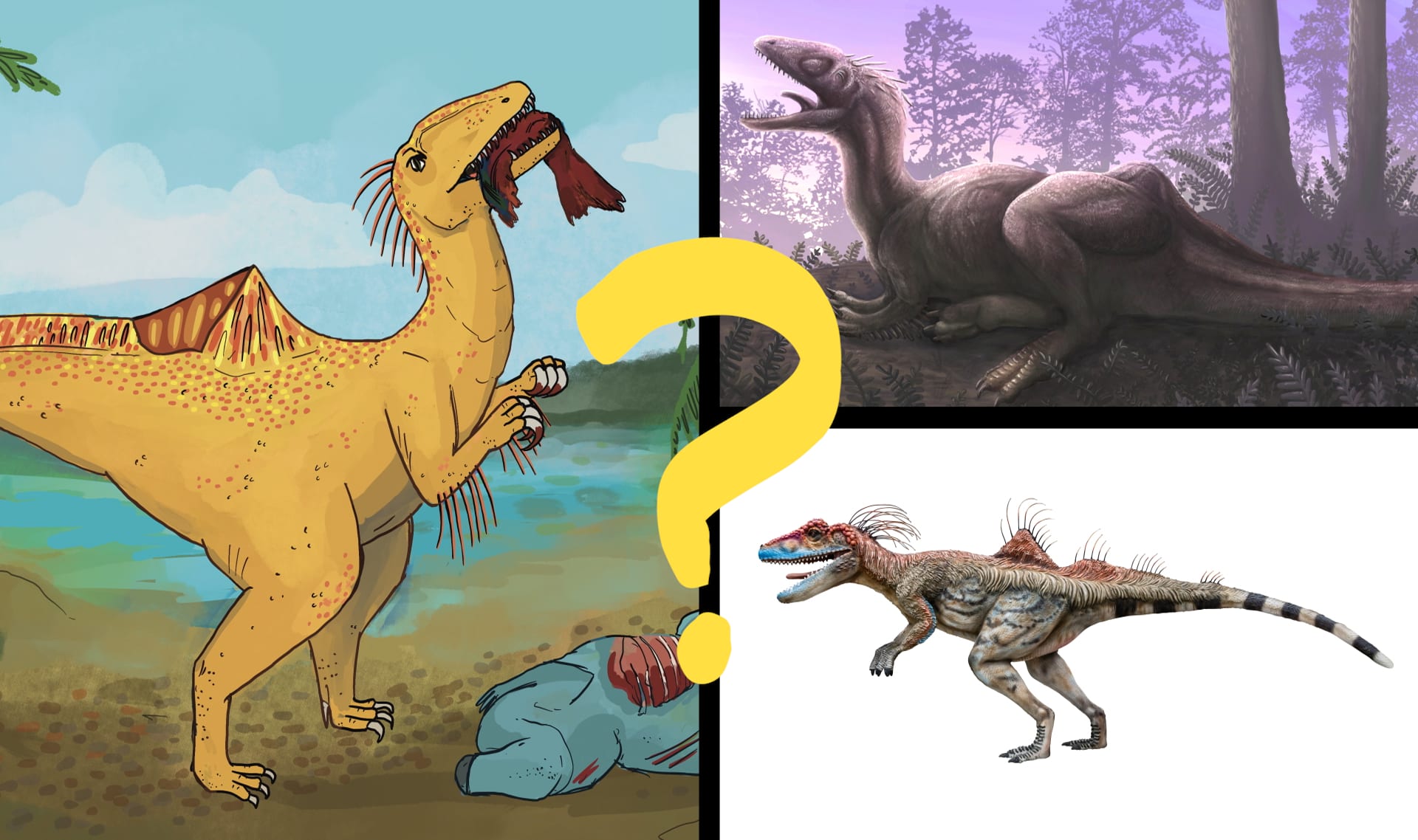
DISCUSS:
Compare these pictures. What’s the same? What’s different?
Compare these pictures. What’s the same? What’s different?

Please wait…
This video is having trouble loading. You may have lost your Internet connection.
Step 1: Click to Reload this page
Step 2: Click to
Try our other video player
Step 3: contact support if trouble persists.
Or,
dismiss this message.
DISCUSS:
If scientists can’t find many fossils of the soft parts of a dinosaur, what evidence should a paleoartist use to draw those parts?

Please wait…
This video is having trouble loading. You may have lost your Internet connection.
Step 1: Click to Reload this page
Step 2: Click to
Try our other video player
Step 3: contact support if trouble persists.
Or,
dismiss this message.


dinosaur
1 of 11
a type of animal that lived long ago and that shares traits with modern birds and reptiles
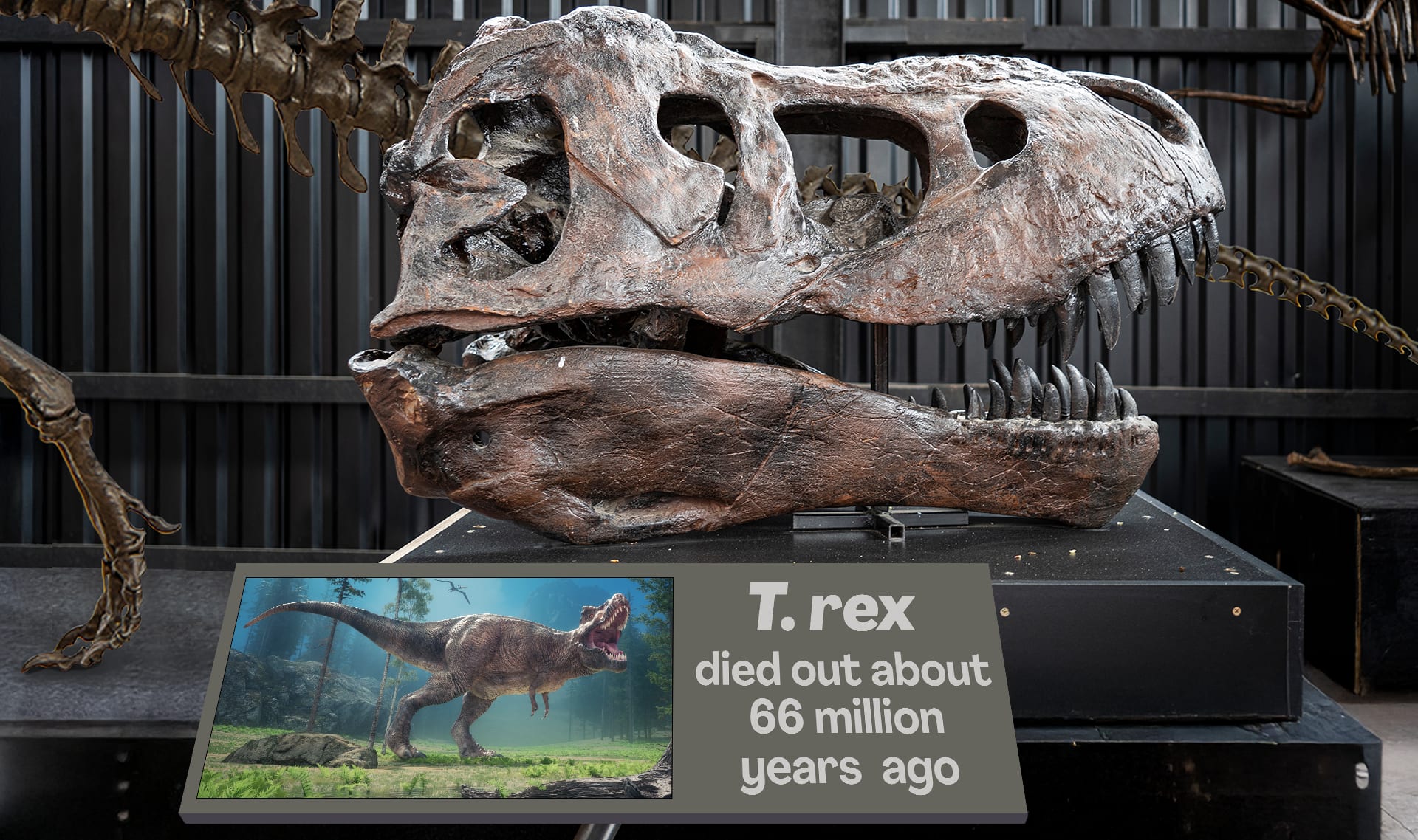
extinct
2 of 11
when a type of living thing no longer exists
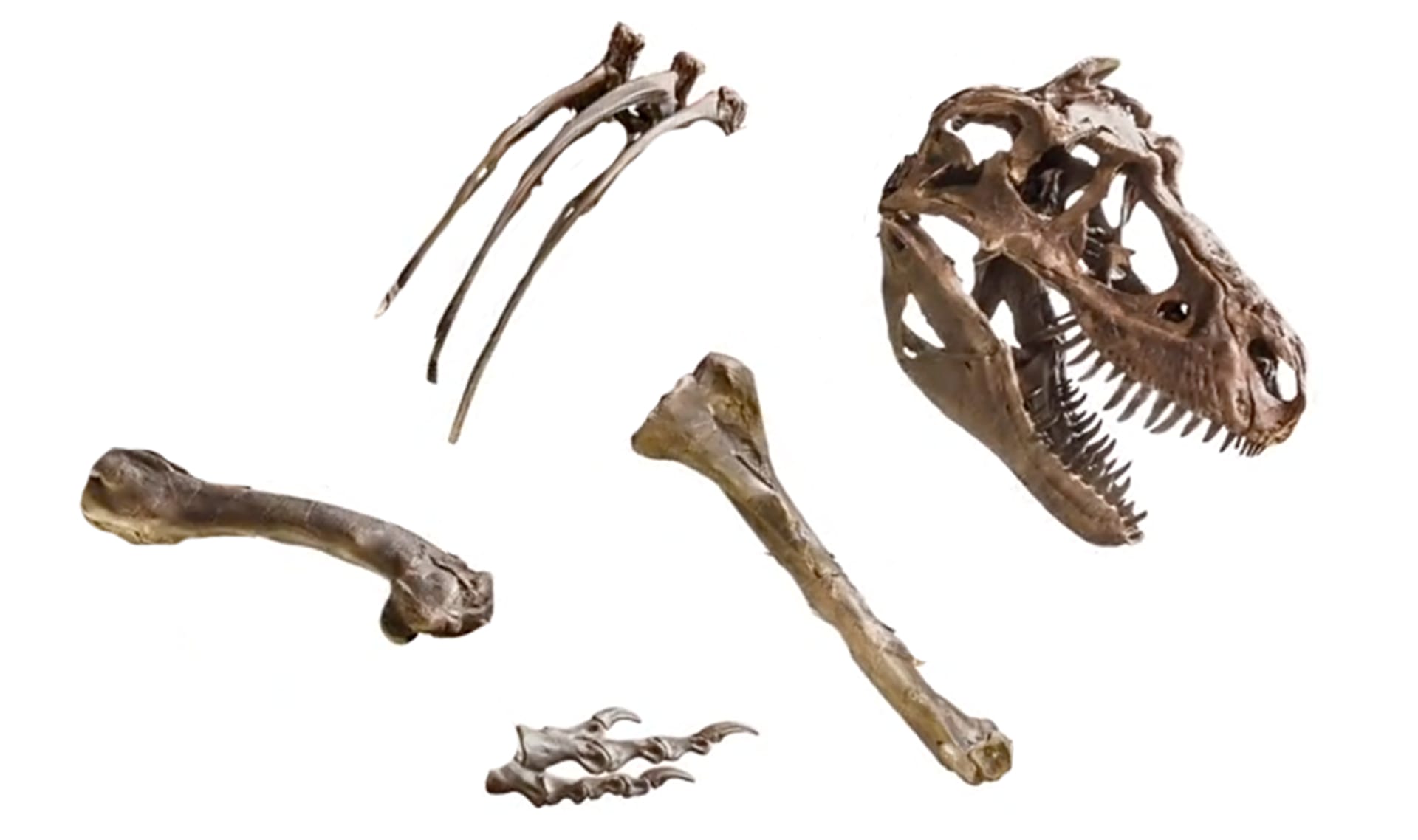
bones
3 of 11
the hard parts inside many animals that help give their bodies shape
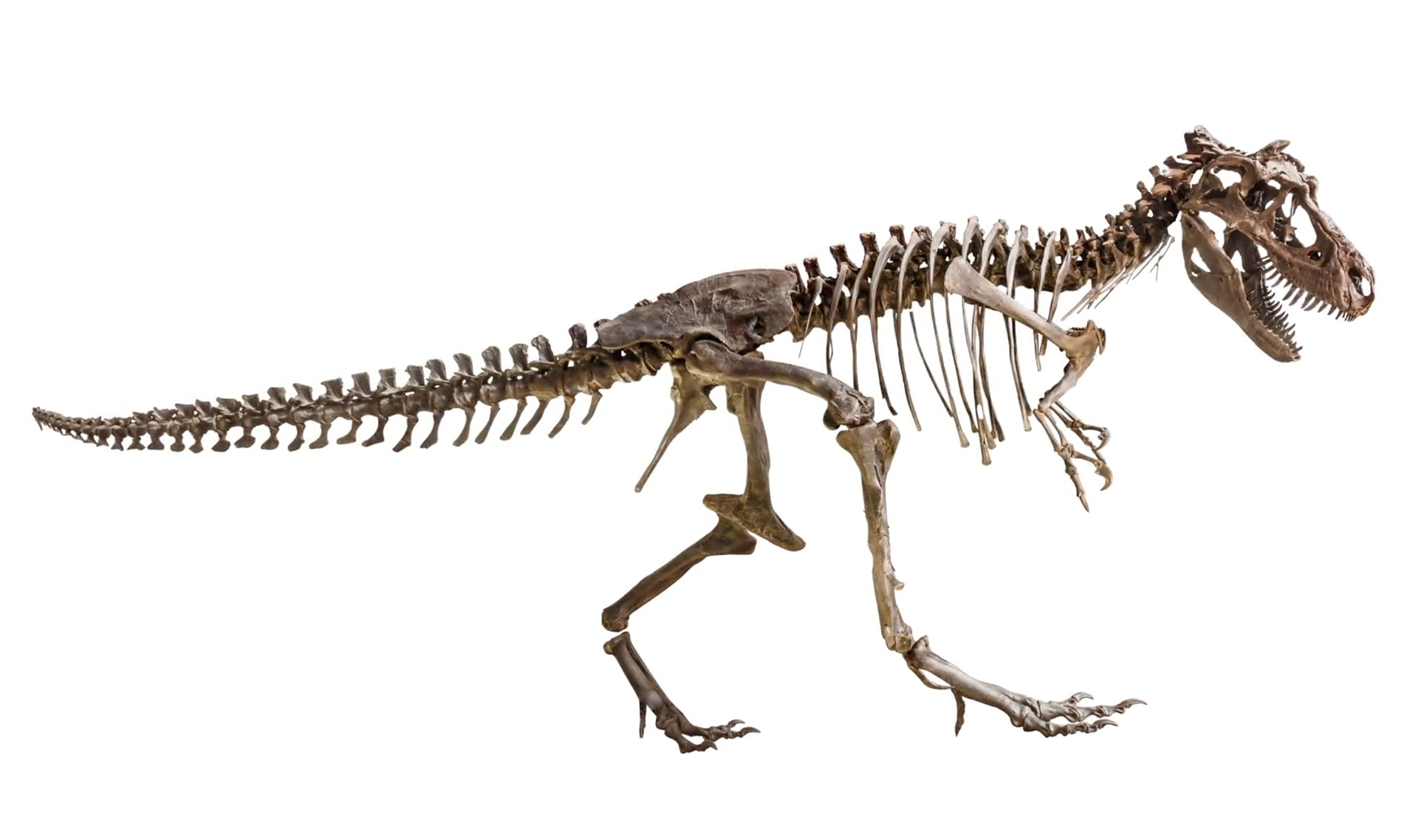
skeleton
4 of 11
all of the bones of an animal

fossil
5 of 11
the remains of a plant or animal that lived a very, very long time ago
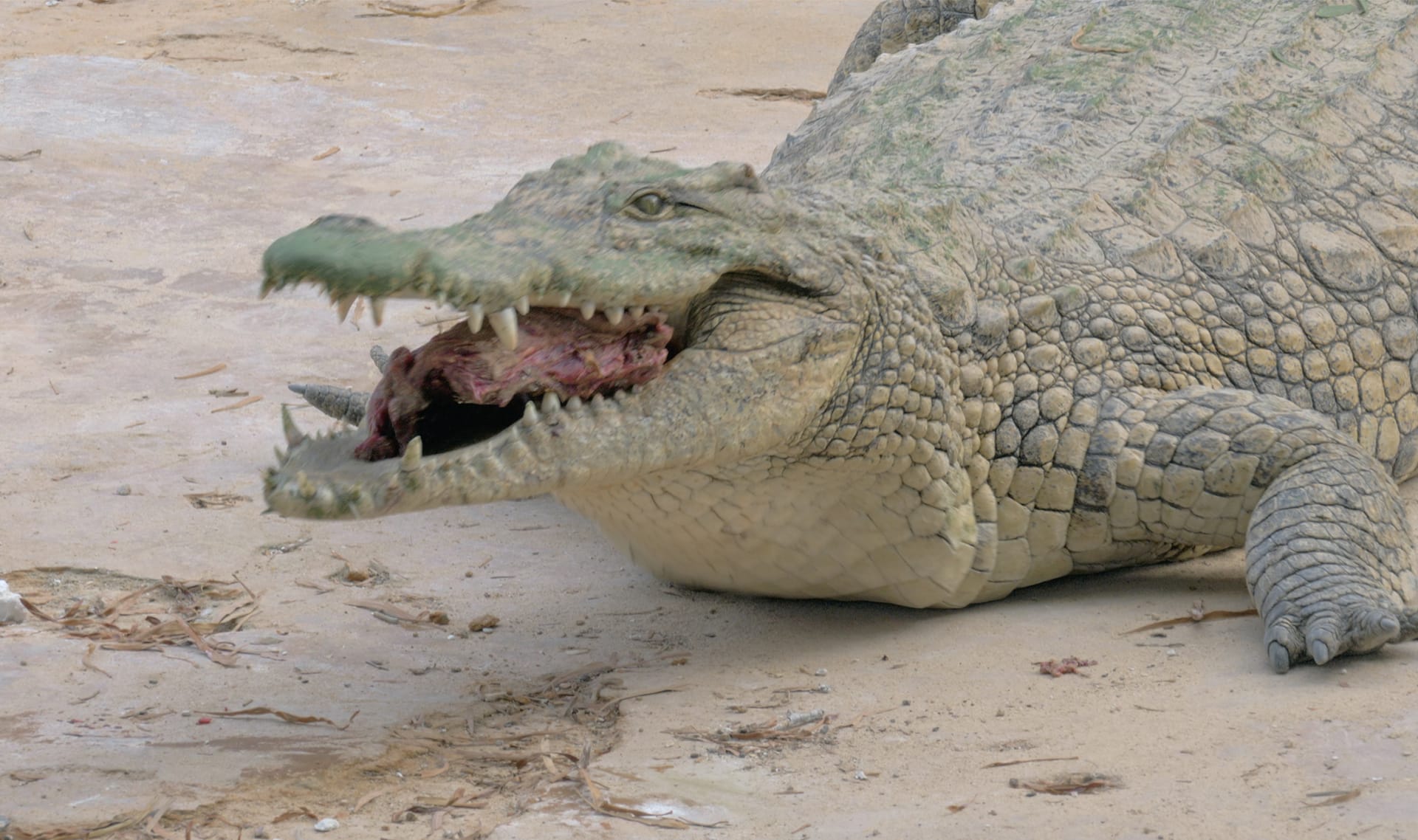
carnivore
6 of 11
an animal that only eats other animals
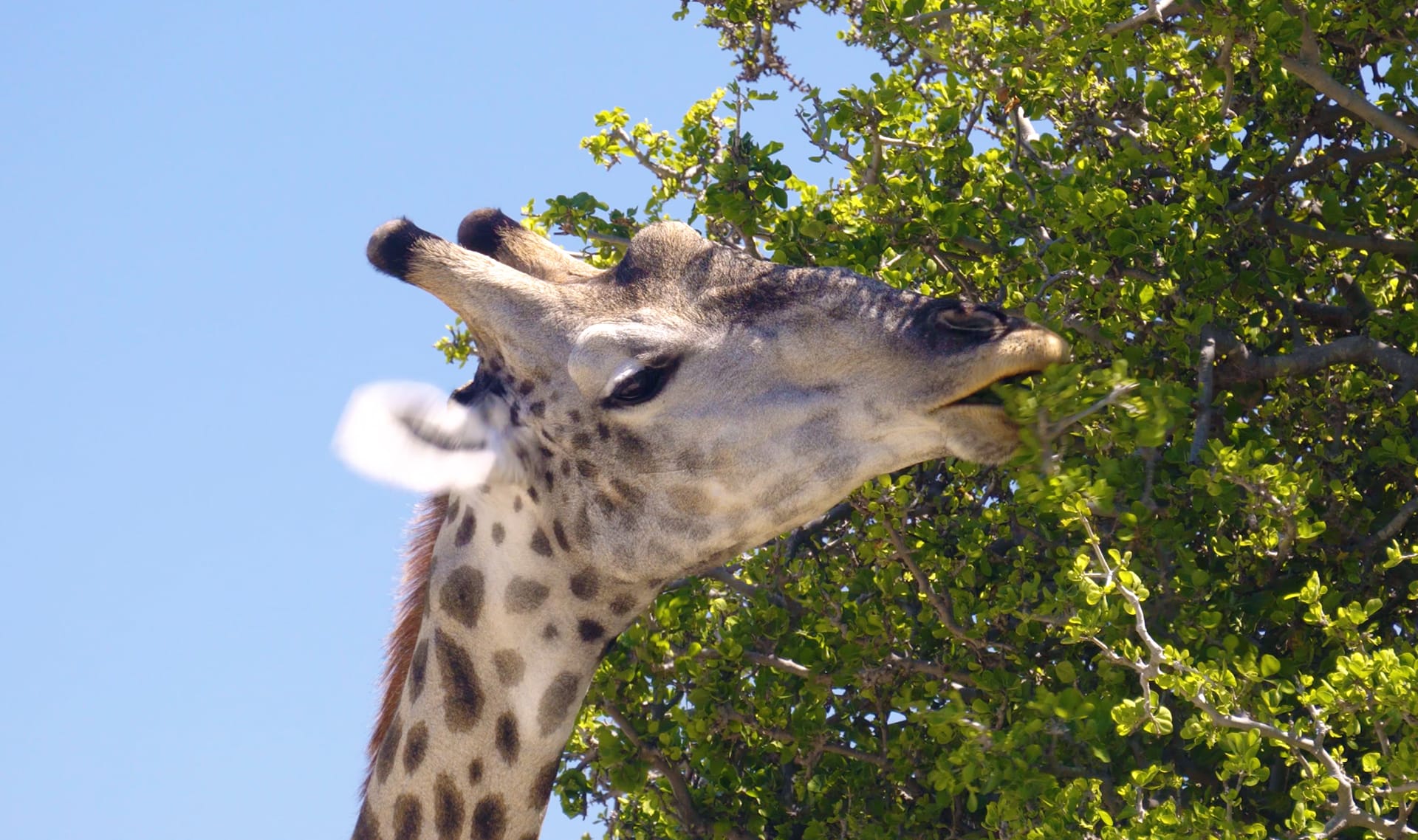
herbivore
7 of 11
an animal that only eats plants

paleontologist
8 of 11
a scientist who studies fossils

observe
9 of 11
to pay close attention to something

claim
10 of 11
to say or write an idea
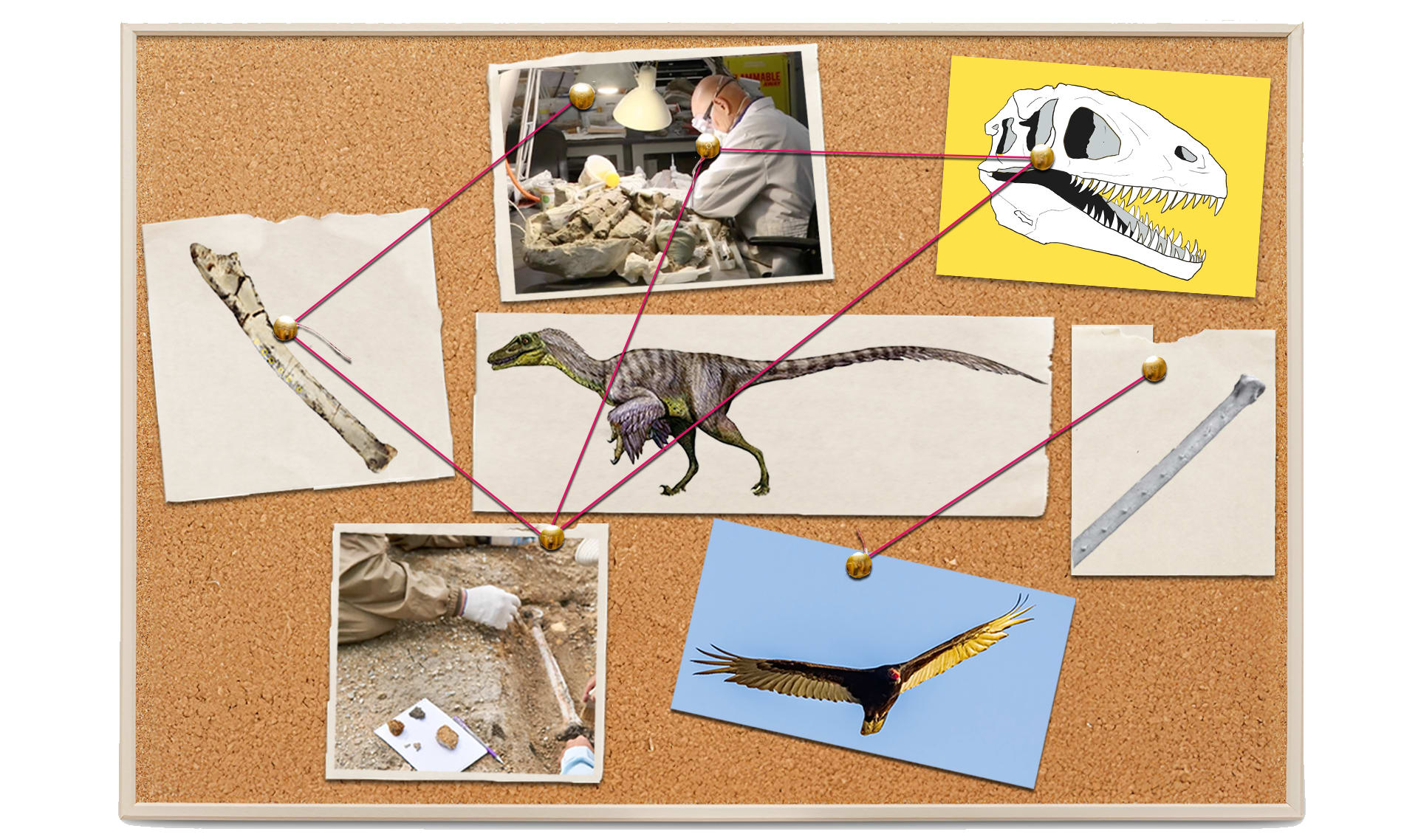
evidence
11 of 11
information that can be used to support or reject an idea
🎉
That’s it for this lesson! How did it go?
Extend this lesson
Sign up now for more great lessons!


